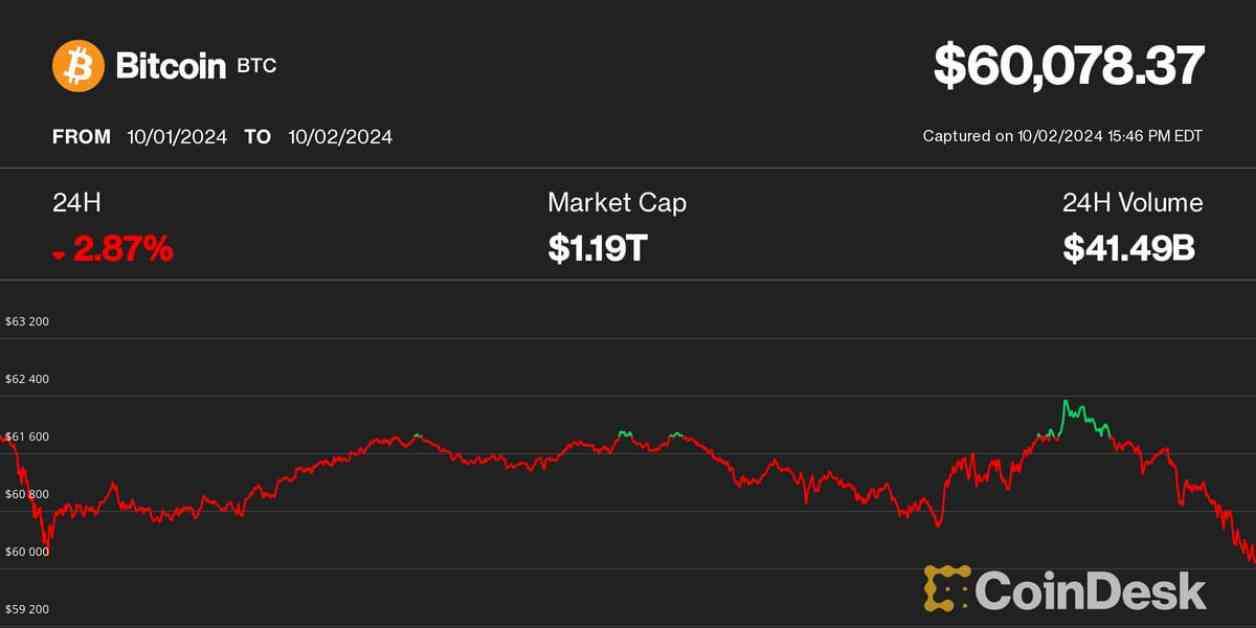Bitcoin’s price has been on a rollercoaster ride recently, with a modest pump above $62,000 quickly fading. As a result, BTC is now down to $60,200, a 3% decrease over the past 24 hours. This downward trend has also affected other cryptocurrencies, with ETH, XRP, ADA, LINK, and NEAR all experiencing declines of 5%-7% during the same period.
The broader crypto market, as indicated by the CoinDesk 20 index, was also 3.8% lower, reflecting the overall bearish sentiment. This dip in prices can be attributed to the geopolitical turmoil, particularly the escalating conflict between Israel and Iran. However, despite these challenges, the $60,000 level has proven to be a solid support for Bitcoin so far.
Analysts at QCP have suggested that if the Middle East conflict escalates further and investors become more risk-averse, Bitcoin could potentially drop to $55,000. Nevertheless, they remain optimistic about the market’s resilience, especially considering the ongoing support for risk assets.
One key indicator to watch is Bitcoin’s “Bull Market Support Band,” which is defined by the asset’s 20-week SMA and 21-week EMA. Currently ranging between $61,100 and $62,900, this band has historically served as a crucial support level during uptrends. A bounce from this band could reinvigorate the bullish momentum, but a decisive break below might signal further downside potential for Bitcoin.
On a more positive note, CryptoQuant has observed signs of increasing demand for BTC, driven in part by U.S.-listed spot ETFs. If this trend continues and favorable year-end seasonality kicks in, Bitcoin could potentially target the $85,000-$100,000 range in the last quarter of the year. These levels align with on-chain trader realized price bands, where short-term traders often take profits after price rallies.
Overall, the crypto market remains dynamic and subject to various external factors, but analysts are cautiously optimistic about the potential for a recovery in Bitcoin’s price. Despite the current challenges, there is still hope for a bullish trend to emerge in the coming months.


















